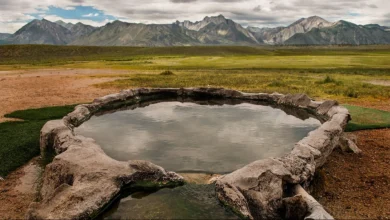Introduction to Antarvwsna
Antarvwsna is a term that weaves tradition, spirituality, and modernity threads. It captures the essence of an ancient practice that has evolved over centuries. As society shifts and changes, so does the interpretation of this fascinating concept. From its roots in traditional beliefs to contemporary debates surrounding its relevance today, Antarvwsna represents a journey through time.
This exploration delves into how Antarvwsna has transformed sacred rituals into varied forms shaped by cultural influences and technological advancements. Join us as we uncover what this evolution means for individuals and communities. Let’s embark on this enlightening journey together!
Traditional Views and Beliefs
Antarvwsna, rooted deeply in cultural heritage, embodies a complex tapestry of traditional views and beliefs. This ancient practice is often intertwined with rituals passed down through generations.
In many communities, antarvwsna signifies a profound connection to ancestry. It involves honoring the past while shaping personal identities. Spiritual aspects are emphasized, and participants engage in practices meant to elevate their consciousness and understanding of the universe.
Rituals associated with antarvwsna can vary widely but often include symbolic acts reflecting respect for nature and human relationships. These gatherings serve not only as communal bonding experiences but also as platforms for sharing wisdom.
Elders play an essential role in preserving these traditions. Their narratives provide context and significance to younger generations who might otherwise drift away from such age-old customs.
Modern Interpretation and Controversies
Modern interpretations of antarvwsna have sparked intense debates within various communities. As cultural norms shift, the traditional practices associated with them are often scrutinized and redefined.
Some argue that these modern adaptations dilute the essence of antarvwsna. They believe that straying from established customs undermines its significance. Critics voice concerns about authenticity and preservation, fearing a loss of heritage.
On the other hand, proponents advocate for flexibility in interpretation. They emphasize the importance of adapting to contemporary values while retaining core principles. This perspective encourages innovative expressions that resonate more deeply with today’s society.
Yet, not all discussions remain civil. Controversies arise as differing viewpoints clash in public discourse and online forums. The passionate debate continues to shape how individuals perceive and engage with this evolving tradition, reflecting broader societal dynamics.
Influence on Society and Culture
The influence of antarvwsna on society and culture is profound. It has shaped artistic expressions, from literature to visual arts. Artists draw inspiration from its themes, exploring the human experience in diverse ways.
In communities, antarvwsna fosters a sense of identity and belonging. It brings people together during rituals and celebrations, reinforcing shared values and traditions. This connection nurtures intergenerational bonds as stories are passed down through time.
On a broader scale, this concept influences social movements. Advocates use its principles to challenge norms and drive change. By promoting understanding and compassion, antarvwsna sparks dialogues that transcend boundaries.
Media representation also plays a pivotal role in shaping perceptions around antarvwsna. Films, documentaries, and podcasts have brought it into the mainstream consciousness while sparking curiosity about its origins and meanings within different cultures.
The Role of Technology in the Evolution of Antarvwsna
Technology has dramatically reshaped the landscape of antarvwsna. Digital platforms have emerged as crucial spaces for discussion and expression. Online forums provide a stage for diverse voices, allowing individuals to share their interpretations freely.
Social media plays a pivotal role in this transformation. It fosters real-time engagement, breaking geographical barriers that once limited discourse around traditional beliefs. Through hashtags and trending topics, conversations about antarvwsna gain momentum quickly.
Moreover, virtual reality experiences offer immersive insights into cultural practices. Participants can engage with traditions on a deeper level without physical constraints. This accessibility encourages younger generations to explore and reinterpret age-old customs.
Apps dedicated to educational content also contribute significantly. They simplify complex concepts related to antarvwsna, making them more relatable and understandable for everyone interested in this rich tradition. Technology is not just an influencer; it’s becoming integral to how we perceive and celebrate our heritage today.
Criticisms and Responses
The evolution of antarvwsna has sparked a range of criticisms. Some traditionalists argue that modern interpretations dilute its essence. They fear the loss of cultural identity and authenticity.
Conversely, advocates for change contend that adaptation is vital for relevance in today’s society. They believe that embracing new perspectives can enrich rather than diminish traditions.
Critics also highlight ethical concerns around commercialization. The commodification of antarvwsna may exploit its roots and meanings, leading to superficial understanding among practitioners.
In response, many proponents stress education as key. By fostering deeper insights into the tradition’s origins and significance, they hope to bridge gaps between old and new practices.
Dialogue continues to shape this discourse, allowing various viewpoints to coexist. This ongoing exchange encourages growth within the community while honoring its past.
Conclusion: Embracing the Evolution of Antarvwsna
The journey of Antarvwsna reflects the dynamic interplay between tradition and contemporary thought. As society evolves, so does our understanding of cultural practices like antarvwsna.
This evolution invites us to engage with both historical roots and modern interpretations. The dialogues surrounding it spark discussions about identity, belief systems, and societal norms.
Embracing this evolution means recognizing the value of diverse perspectives while honoring the traditions that shaped them. Whether one aligns more closely with its traditional views or modern takes, what remains undeniable is the significance of antarvwsna in shaping individual and collective identities.
As we continue to explore these themes, it’s vital to foster an open-minded approach that appreciates the changing landscape while respecting its origins. This path offers a rich tapestry woven from threads of history, culture, technology, and communal experience—an ever-evolving narrative worth celebrating.




